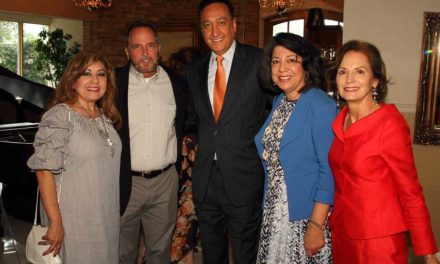The mother of Jesus Christ is depicted differently in different cultures all over the world. Perhaps the most visible of those is la Virgen de Guadalupe. The figure was said to appear before an indigenous boy named Juan Diego walking toward the Hill of Tepeyac on December 12, 1531. He saw a young woman with black hair and dark skin which looked more like an indigenous person. She ordered him to go to the Bishop and ask him to build a church at the Hill of Tepeyac. When he ran to the Bishop, the Bishop didn’t believe.
So the Virgin Mary appeared again in front of Juan Diego and told him to collect flowers from the top of the hill, but because it was December he knew that there was not going to be any flowers at the rocky hill. Upon reaching the top of the hill, he was surprised to see that it was covered with colorful and beautiful flowers. He collected the flowers using his overcoat and ran again to see the Bishop.
The bishop discovered the image of Virgin Mary’s picture was miraculously traced on the coat. Seeing both the unseasonal flowers and the image of the Virgen, the Bishop realized Juan Diego had told him the truth and The Basilica of the Virgin of Guadalupe was built on the hill of Tepeyac in Mexico City.
Millions tune into the live broadcast of people flocking to the landmark in Mexico city. The holiday marks the beginning of the Mexican holiday season that will continue into January with el Dia de Los Santos Reyes.
The vision of la Virgen de Guadalupe as an indigenous woman was pivotal during a time of early spanish colonization in Mexico and is widely considered the blending of indigenous traditions with Catholic ones.
Local non-profit art gallery Centro Cultural Aztlan will present the 23rd annual Celebración a la Virgen de Guadalupe Exhibit this holiday season. The gallery has been hosting the secular observance of the holiday for 23 years in their gallery. The non- profit group will explore the cultural impact of the Icon. The opening reception and Art Market will take place this Wednesday, December 12, 2018 from 6:00-9:00 p.m at 1800 Fredericksburg Road, Suite 103.
Free for the community, visitors will explore the significance of the Latin American cultural icon, la Virgen de Guadalupe, through secular visual narratives showcasing a myriad of artistic representations of her by some of San Antonio’s most noted artists.
“La Virgen de Guadalupe has moved beyond a religious icon; she has been embraced by Latinos/as/xs around the world and she belongs to the people. This exhibition is the oldest and most reverend featuring la Virgen de Guadalupe as the main theme,” the curators said.
The exhibition includes Virgen de Guadalupe inspired acrylic, pastel, oil & watercolor paintings, sculptures, jewelry, and contemporary folk art.
For this festive occasion the opening reception will include an art market with unique artwork, crafts, and artesanía inspired by la Virgen, along with traditional treats like tamales, buñuelos, champurrado y mas.
Local musicians El Tallercito de Son will honor la Virgen de Guadalupe with live music and a traditional community Fandango.
The exhibit is free and open to the public and will be on view through December 14, 2018, and from January 2 – January 18, 2019, Monday through Friday from 9:00 am to 5:00 p.m.
Participating artist include:Angelica Mayorga Gomez, Lupe Muñoz, David Blancas, Richard Arredando, Luciano Arredando, Felix Saucedo, Irma Amparo, Alexandra Nelipa, Karen Faye Alvarez, Juliet Rivera-Schwabe, Raúl Servín, Lynn Maverick Denzer, Israel Rico, Bernice B. Appelin-Williams, Martin Emmanuel Rangel, Tim Palomera III, Esther Guajardo, Hector Garza, Antonio Garcia, Pearl A. Sanchez, Victor Tello, Stephanie Zapata, Rachel Valdez, Tereza Gonzalez, and more.
For more information, please call Centro Cultural Aztlan M-F, 9am to 5pm at 210-432-1896 or visit Centro Cultural Aztlan’s office located in the Deco Building at 1800 Fredericksburg Road, Suite 103.
Celebrate the day of the Virgin of Guadalupe










